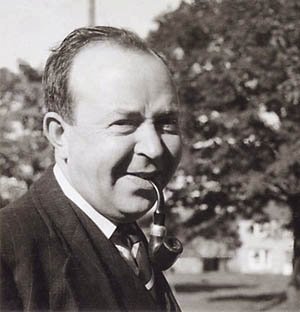 The first entry for Canna in Maclean’s diary is
dated 1st of December 1945, and a few weeks later, on the 14th of January, he
was to meet Hamish Henderson (1919–2002), also visiting Canna House at the
behest of John Lorne Campbell, for the first time. Henderson in his tribute
that he later paid to Maclean sets the scene:
The first entry for Canna in Maclean’s diary is
dated 1st of December 1945, and a few weeks later, on the 14th of January, he
was to meet Hamish Henderson (1919–2002), also visiting Canna House at the
behest of John Lorne Campbell, for the first time. Henderson in his tribute
that he later paid to Maclean sets the scene:
I had the privilege of meeting him at the
very start of his period in Scotland under the aegis of the Irish Folklore
Commission. This was in early 1946, on
the Isle of Canna, to which I have been invited by Fear Chanaidh—John Lorne Campbell. Another guest was the late Séamus Ennis, the renowned Irish uillean
piper—he was engaged on transcribing material on some of the cylinders
recorded on Barra and South Uist by Campbell and his wife Margaret Fay Shaw—so Calum had every excuse for reverting to
unabashed Irishism. My first impression of him, curled up in a window seat and
surveying the new arrival with quizzical interrogatory eyes, was of a friendly
but very watchful brownie—or better, maybe, leprechaun!—and I have to
admit that the story about Mannhardt did momentarily flash across my mind.
Later that evening
he regaled us with some of the Irish songs (in English) which he had picked up
in Dublin. The ones I remember best are “The Bould Thady Quill”, “Mrs McGrath”
and “Moriarty” (“The Pride of the D.M.P)—and I can hear as if it were yesterday
the inimitable triumphal lift that he gave to the punch line
“Flap your wings, Moriarty!”
Later in his tribute, Henderson remembers
Maclean’s singing prowess when he was heard at either a ceilidh or
at a house-party:
I have referred to Calum’s zest and wonderful
comic verve when giving renditions of Anglo-Irish songs like “Mrs McGrath”, but
it was when he was singing Gaelic love songs—and especially songs of tragic
love—that he was at his most moving as a singer. To quote John MacInnes again:
“The pathos with which he sang elegies and the like was arresting…I remember
him singing Is daor a cheannaich an
t-iasgach in Norman MacCaig’s house one night. He brought out the
rhythmical beauty of it with great sensitivity.” At Edinburgh University
Highland Society ceilidhs in the late 40s and early 50s his favourite seemed to
be Ho luaidh ’s truagh nach deachaidh
sinn (which became a sort of ‘pop number’ in the Society), and there was no
questioning the feeling and the deep poignant seriousness which he conveyed when
singing that haunting song.
Hamish
Henderson was in his own right a prolific and experienced collector and he
would share his latest finds with his colleagues. In the late 1950s, for
instance, Maclean travelled to the Muir of Ord with the express purpose of
recording material from the travellers there. In his book The Highlands (1959), Maclean mentions Henderson in connection with
MacPherson’s Rant:
Equally interesting, if not quite so
venerable, is the broken fiddle of the noted James MacPherson, an honoured
freebooter who robbed the rich to feed the poor and who was hanged on November
16th, 1700, in Banff. Before going to his death, he asked to be allowed to play
one last tune. He played MacPherson’s Lament and, when the tune was finished,
turned round and asked if there was anyone present willing to speak for him. No
one would, so he broke his fiddle over his knee, sprang from the gallows and
hanged himself. My friend, Mr Hamish Henderson, has recorded some very fine
versions of the song, notably from Davie Stewart of Dundee and Jimmie MacBeath
of Elgin, and the tune has long been a favourite with Highland pipers.
Fare weel ye dark and lonely hills
Away beneath the sky,
MacPherson’s Rant will nae be long
Below the gallows
tree.
Sae rantinly, sae
wantonly, sae dauntinly gaed he.
He
played a tune and danced it roon’
Below
the gallows tree.
Fare weel my am dear
Heiland hame,
Fare
ye weel my wife and my bairns.
There was nae repentance at my hert
While
the fiddle was in my airms.
And
some to buy my fiddle.
But before that I do part wi’ her
But before that I do part wi’ her
I’ll
brek her thro’ the middle.
The broken fiddle is still to be seen among
the clan relics at Newtonmore. It is very fitting that it should have been
given a place of honour, for MacPherson’s Rant is much better known today than
the black chanter or the green banner. Songs have always been and still are
very potent things.
References:
Calum
Maclean, The Highlands (London:
Batsford, 1959)
Hamish
Henderson, ‘Calum Maclean 1915–1960’, Tocher,
vol. 39 (1985), pp. 81–88
Image:
Hamish Henderson (1919–2002). Courtesy of the School of Scottish
Studies Archive.

No comments:
Post a Comment